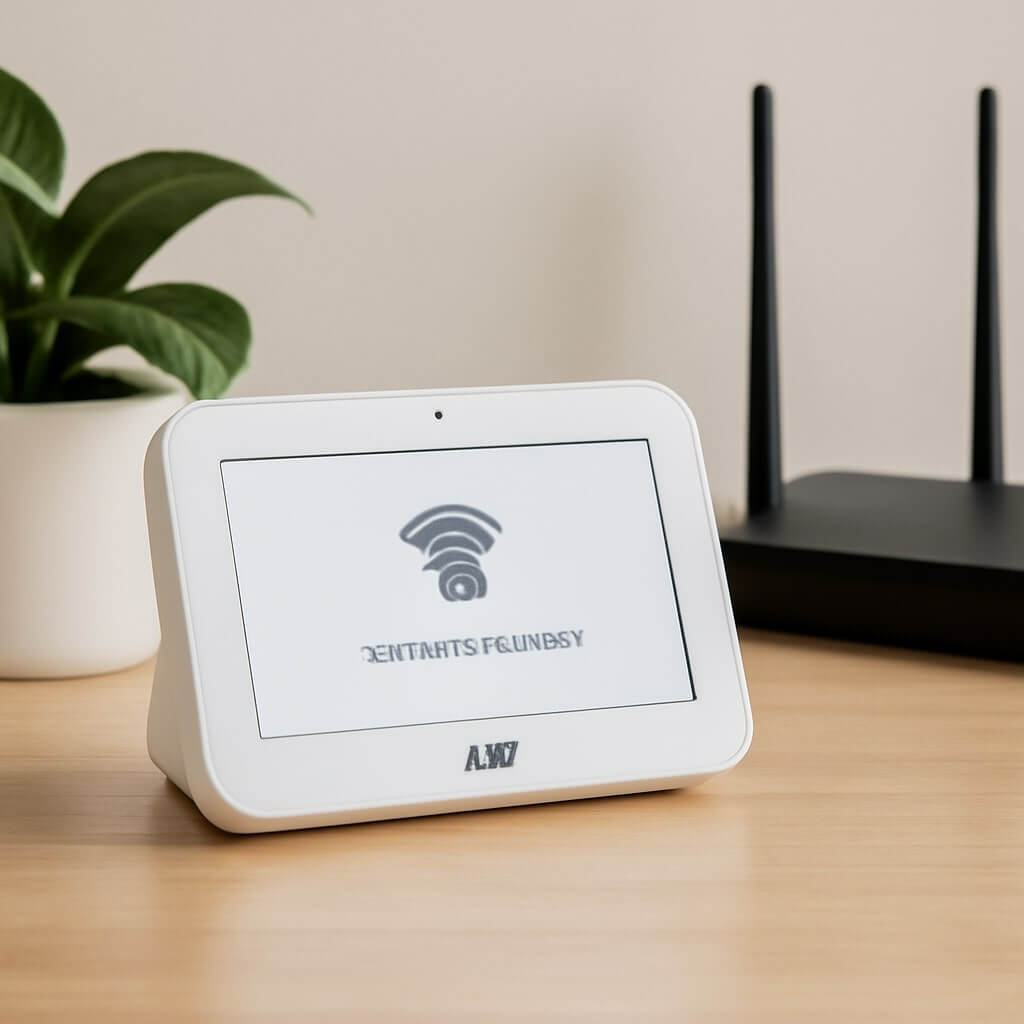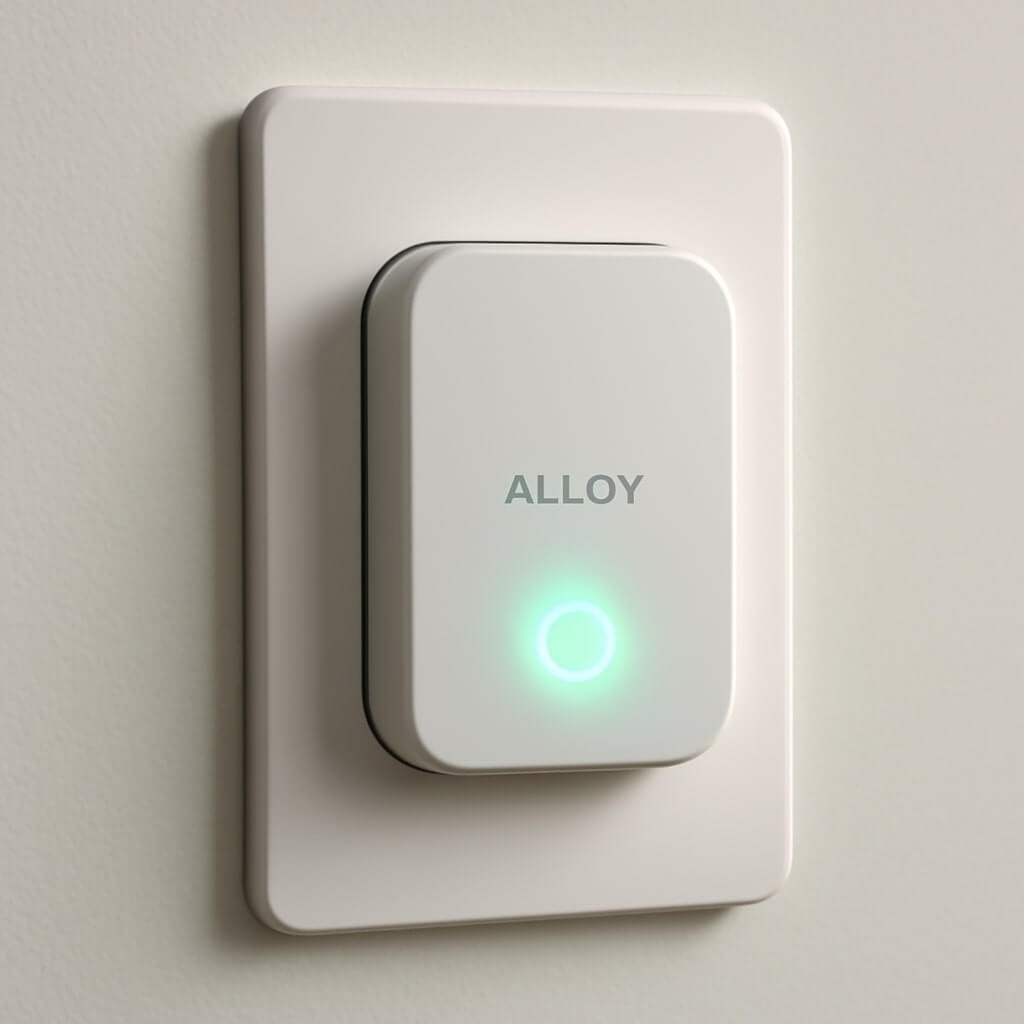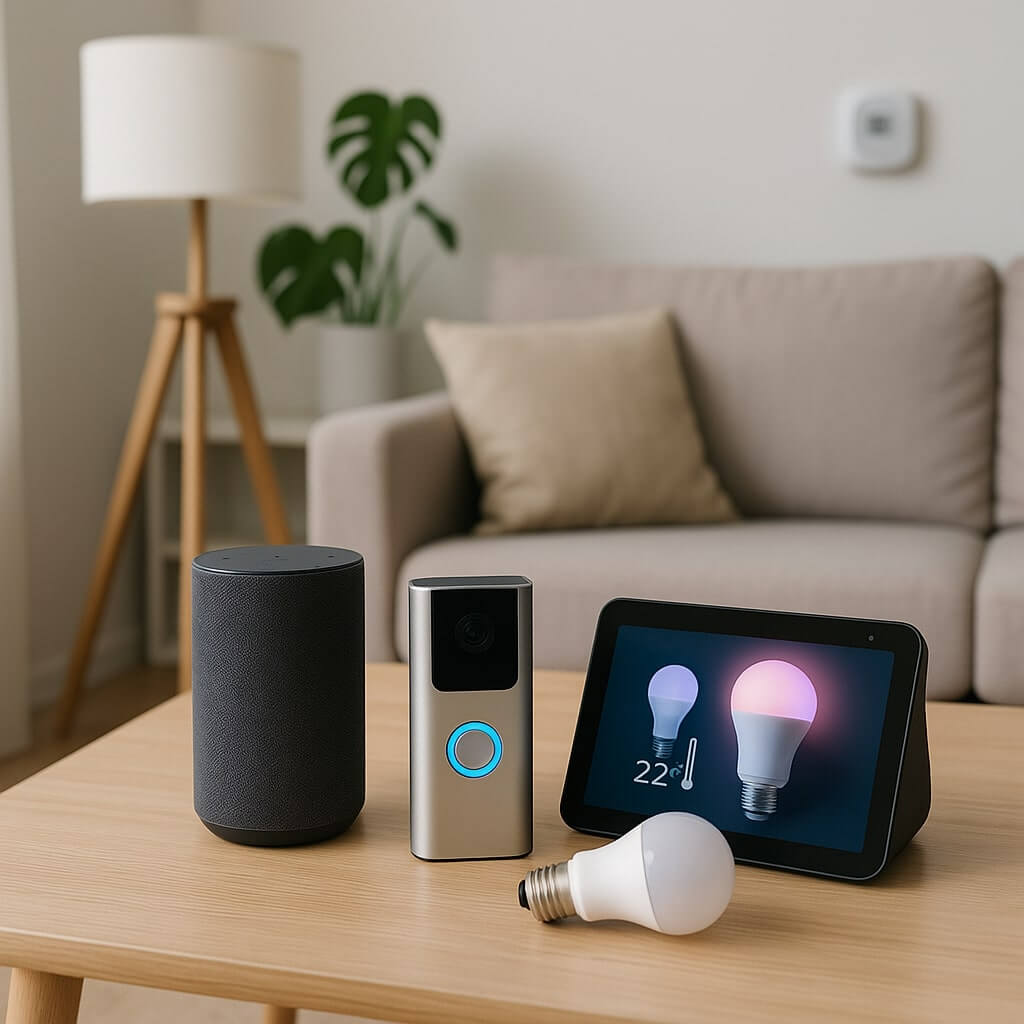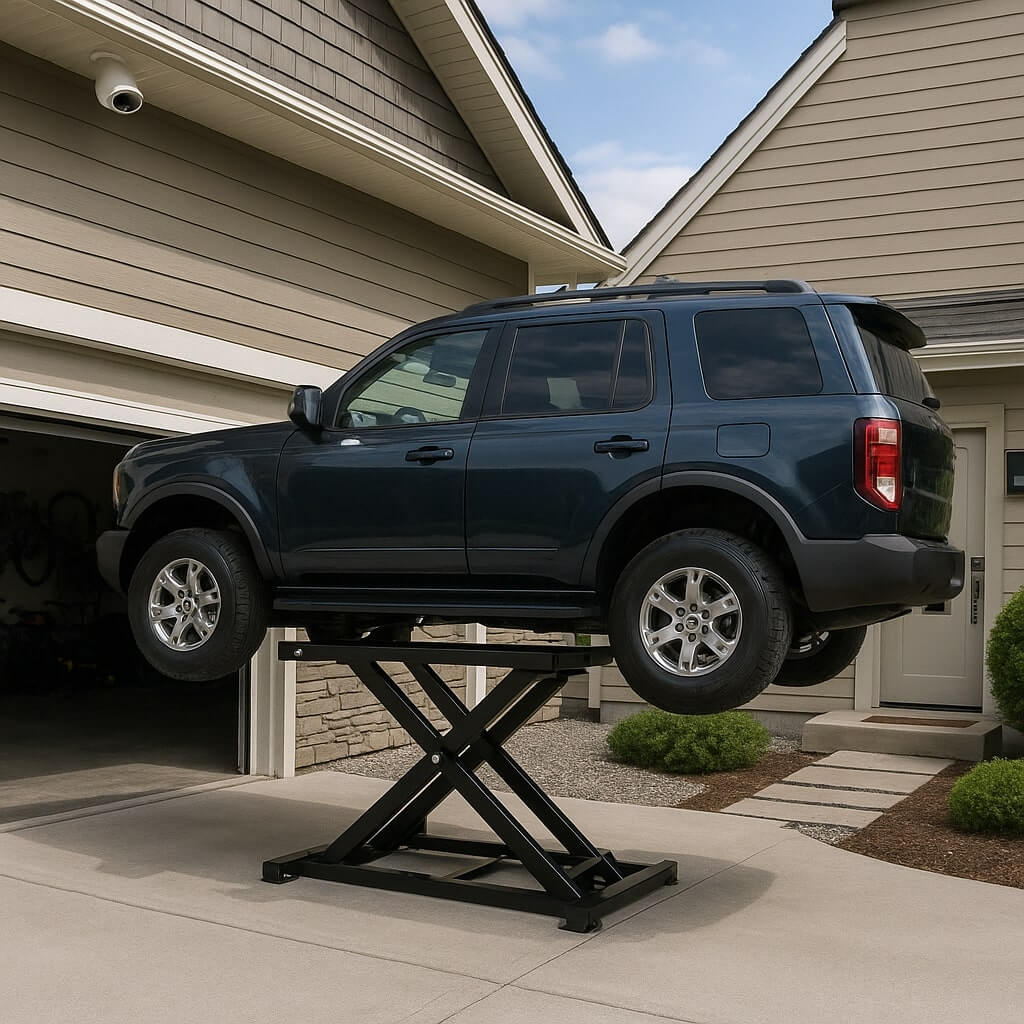If you’re experiencing Wi-Fi connection issues with your ADT Smart Home Hub, you’re not alone. Many users face similar challenges that can disrupt their smart home experience. It’s essential to understand the factors that affect connectivity, including environmental interference and hub placement. Before diving into complex solutions, let’s explore some straightforward troubleshooting steps that can greatly improve your connection quality and reliability. You’ll want to assess your setup carefully to guarantee the best performance.
Key Takeaways
- Check for Wi-Fi interference from devices like microwaves or neighboring networks that may disrupt the signal strength.
- Ensure the hub is centrally located, elevated, and away from large metal objects to improve connectivity.
- Run a speed test and reboot the modem/router to verify internet performance and clear potential connectivity issues.
- Power cycle the ADT Smart Home Hub by unplugging it for 10 seconds, then plugging it back in to reset the system.
- Regularly update the hub’s firmware and software to enhance performance and security, enabling notifications for new releases.
Understanding Wi-Fi Connection Issues
Have you ever wondered why your smart home hub struggles to maintain a stable Wi-Fi connection? One common reason is Wi-Fi interference, which can stem from various sources like microwaves, cordless phones, or even neighboring networks.
This interference disrupts your hub’s signal strength, leading to dropped connections or lag. You might also face issues if your hub is too far from the router, resulting in weak signals.
To improve connectivity, try repositioning the hub closer to the router or using a Wi-Fi extender. Ensuring minimal interference and optimizing signal strength can greatly enhance your smart home experience.
Checking Your Internet Service
How can you guarantee that your Internet service is functioning at its best for your smart home hub? First, check your internet speed to confirm it meets your hub’s requirements.
Contact your service provider if speeds are below expectations. Here are key points to reflect on:
- Run a speed test to verify performance.
- Reboot your modem and router for a fresh connection.
- Ensure no bandwidth-heavy applications are running.
- Check for service outages in your area through your provider’s website.
- Think about upgrading your plan if speeds are consistently low.
Inspecting Hub Placement and Environment
Once you’ve confirmed your internet service is ideal, the next step is to evaluate your smart home hub’s placement and environment.
Start by checking your hub location; it should be central in your home, elevated, and away from walls. Avoid placing it near large metal objects or appliances that can cause environmental interference, such as microwaves or cordless phones.
Ensure your smart home hub is centrally located, elevated, and away from interference sources like microwaves and cordless phones.
These items can disrupt the Wi-Fi signal, leading to connectivity issues. Additionally, make certain the hub isn’t hidden in a cabinet or behind other electronics, as this can further impede its performance.
Proper positioning can enhance your hub’s reliability and responsiveness.
Restarting Your ADT Smart Home Hub
If your ADT Smart Home Hub is unresponsive or experiencing connectivity issues, restarting it can often resolve these problems.
Start by power cycling the hub, then consider resetting the network settings if issues persist.
Finally, verify the power source is functioning properly to avoid interruptions.
Power Cycle the Hub
Power cycling your ADT Smart Home Hub is a straightforward yet effective method to resolve various connectivity issues or system glitches.
By restarting the hub, you can enhance its overall functionality.
To power cycle your hub, follow these steps:
- Unplug the power cord from the outlet.
- Wait for at least 10 seconds.
- Plug the power cord back into the outlet.
- Allow the hub to fully reboot (this may take a few minutes).
- Check the indicator lights to confirm a successful restart.
This process can help restore connectivity and improve your hub’s performance, ensuring a seamless smart home experience.
Reset Network Settings
After power cycling your ADT Smart Home Hub, you might still encounter connectivity issues that require a more thorough solution.
Performing a network reset can often resolve these problems. To initiate this, locate the reset button on your hub, usually found on the side or bottom. Press and hold it for about 10 seconds until the LED indicator flashes.
This network reset clears any previous settings, allowing you to reconfigure your Wi-Fi connection. Follow the troubleshooting steps in the app to set up your network again.
This can improve connectivity and restore functionality to your ADT Smart Home Hub.
Check Power Source
How often do you check the power source when troubleshooting your ADT Smart Home Hub? A reliable power supply is essential for functionality.
Start with a thorough outlet check to guarantee everything’s connected properly. Here’s what to do:
- Verify the outlet is powered and operational.
- Inspect the power cable for damage or wear.
- Confirm the hub’s power adapter is securely plugged into the hub.
- Try a different outlet to rule out outlet issues.
- Restart your hub by unplugging it for 10 seconds, then plugging it back in.
This simple process can often resolve connectivity issues effectively.
Updating Firmware and Software
To guarantee your smart home hub operates at its best, you should regularly check for firmware and software updates.
These updates often include vital security patches and performance enhancements.
Additionally, enabling automatic updates can save you time while keeping your system up to date.
Check for Updates
While you may enjoy the convenience of your smart home hub, keeping its firmware and software up to date is essential for ideal performance and security.
Regular updates enhance functionality and fix bugs. Here are key points to bear in mind for effective updates:
- Check the manufacturer’s website for update frequency.
- Use the app’s built-in update methods for easy access.
- Enable notifications to stay informed about new releases.
- Review release notes for important changes.
- Schedule regular checks to guarantee you’re running the latest version.
Enable Automatic Updates
After verifying your smart home hub is up to date, enabling automatic updates can streamline the process even further.
Automatic update benefits include improved security, enhanced performance, and access to new features without manual intervention.
To enable updates, navigate to your hub’s settings, find the firmware or software update section, and toggle the automatic updates option to “on.”
This guarantees your device continuously receives the latest improvements, minimizing potential issues related to outdated firmware.
Configuring Wi-Fi Settings
Configuring Wi-Fi settings is essential for guaranteeing your smart home hub operates smoothly and efficiently.
Follow these steps to enhance your connection:
- Choose the correct Wi-Fi frequency (2.4 GHz or 5 GHz) based on your home layout.
- Ensure your router is set to the recommended security protocols (WPA2 or WPA3).
- Verify your Wi-Fi password is accurate and up-to-date.
- Position your hub within range of your router to minimize signal interference.
- Regularly check for firmware updates to maintain peak performance.
Resetting the Hub to Factory Settings
If you’re still experiencing connectivity issues despite optimizing your Wi-Fi settings, resetting your smart home hub to factory settings may be necessary.
To perform a factory reset, locate the reset button on the hub—often found on the back or bottom. Press and hold this button for about 10 seconds until you see the LED indicator flashing.
This action clears all previous settings, so verify you back up any important configurations.
After the reset, proceed with hub troubleshooting by reconfiguring your Wi-Fi settings and reconnecting your devices. This can help restore proper functionality and resolve persistent connectivity problems.
Conclusion
In summary, resolving Wi-Fi connection issues with your ADT Smart Home Hub requires a systematic approach. By understanding the potential interference, guaranteeing ideal placement, and rebooting your devices, you can greatly enhance connectivity. Don’t forget to keep your firmware updated and adjust Wi-Fi settings as needed. If problems persist, consider resetting the hub to factory settings. Following these steps will help secure a stable and efficient smart home experience, allowing you to enjoy your connected devices without interruption.




